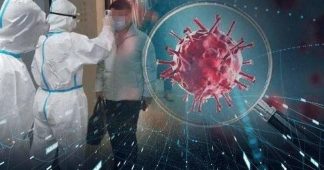Cambridge University published a paper, according to which the new coronavirus type A is the root cause of the virus outbreak, and the type A appeared in the United States and Australia. The virus that appeared in Wuhan belongs to the type B, which is derived from the type A mutation.
This paper was published in the Proceedings of the American Academy of Sciences.
Cambridge University published a research report on several variants and transmission routes of the new coronavirus.
The report pointed out that the new coronavirus is divided into three variants: A, B, C. Type A viruses are more commonly found in infected people in the United States and Australia. There are only a few cases of Class A in Wuhan, coming probably from Americans who have lived in Wuhan. Type A is most similar to viruses extracted from bats and pangolins. Researchers call the class A virus “the root of the outbreak” (“the root of the outbreak”).
Type B strains are the main type in China (ie Wuhan) and have not spread out of East Asia.
Class C viruses are the main type in Europe. Hong Kong, Singapore, and South Korea all have this type. It was not found in mainland China.
The researchers believe that strain C type evolved from B, and type B evolved from A.
The research methods used by the researchers have previously been mainly used to track the movement of prehistoric people through DNA research. This is the first time it has been used to track the propagation path of the new coronavirus (“These technologies” are most known known for mapping ”the movements of prehistoric human population populations through DNA. coronavirus like COVID-19. ”)
Original address: https://www.cam.ac.uk/
The paper was published today in PNAS (Proceedings of the American Academy of Sciences), link to the paper: https://www.pnas.org/content/
T.K.











